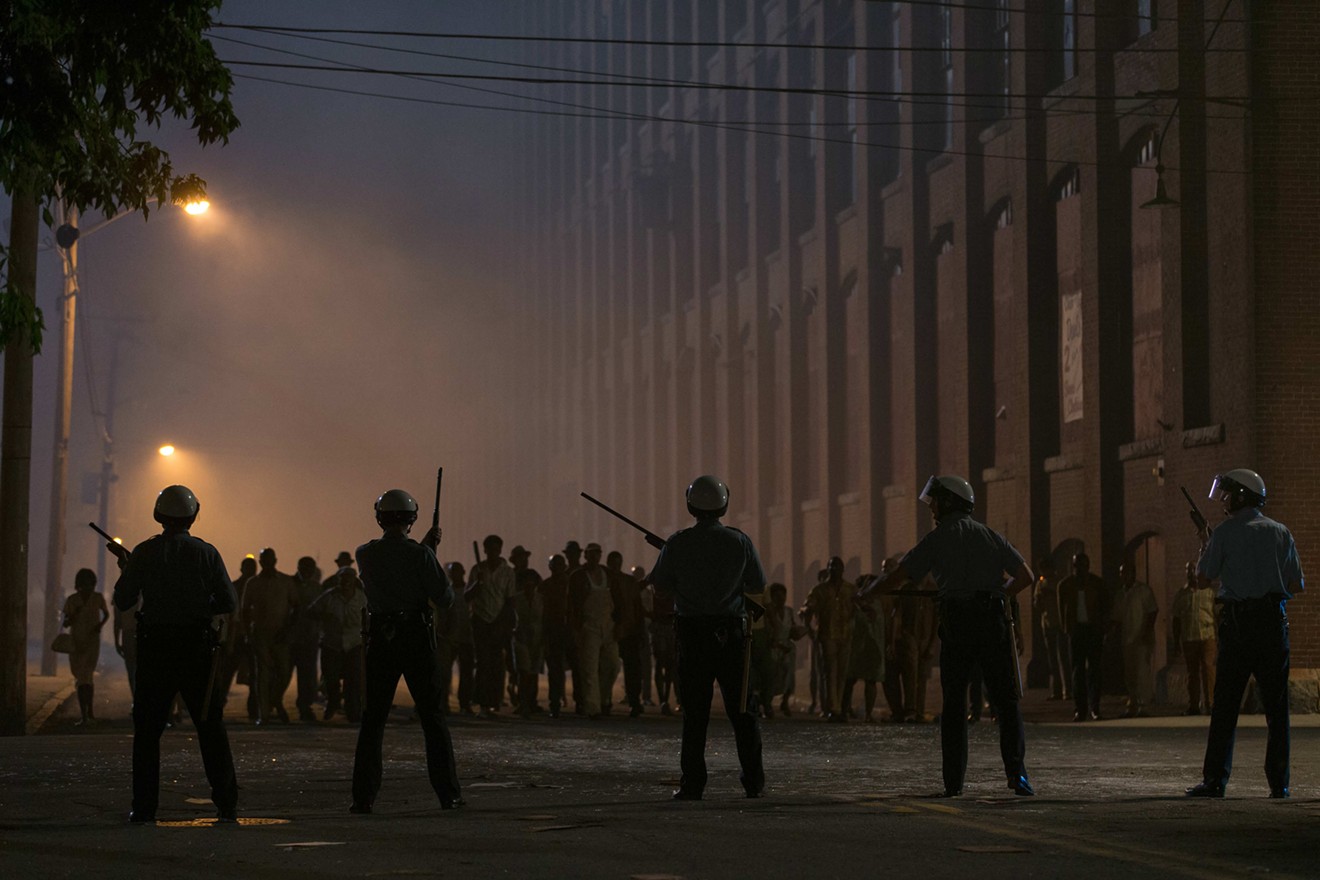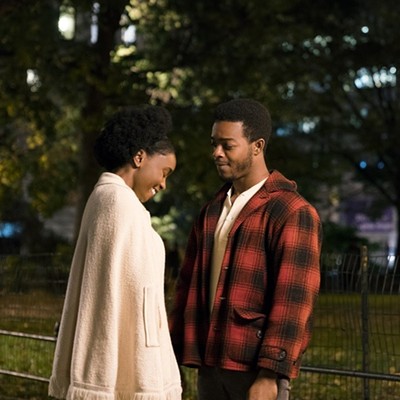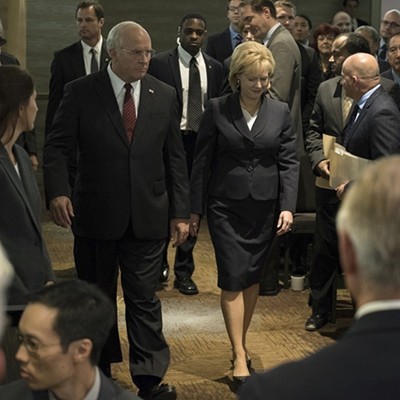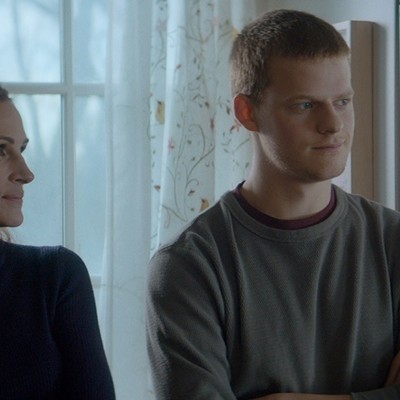I sincerely hope that there’s a five-hour cut of Kathryn Bigelow’s Detroit somewhere, a version with cleaner through-lines, deeper characterizations and a more organic narrative. But the version that we have right now — a messy, troubling beast clocking in at around 150 minutes — is riveting in its own way. Working with screenwriter Mark Boal, the former journalist who also wrote the director’s previous two films, Zero Dark Thirty and The Hurt Locker, Bigelow has crafted a portrait of the 1967 Detroit uprising that manages to be both history lesson and incendiary device, even if it sometimes sputters.
Bigelow opens with paintings by the late Jacob Lawrence, lightly animated, depicting the Great Migration of African-Americans from the South during the period before World War I, and the “white flight” that left many cities, including Detroit, in disarray, fomenting racial disparity between largely black urban neighborhoods and the white police forces patrolling them. For a film that already has boatloads of information it needs to deliver — though widely covered at the time, the events in Detroit have been largely forgotten by today’s amnesiac world — this could feel like one framing device too many, but the sequence offers critical insight into the blight and despair that helped feed the chaos of 1967.
That fury was sparked by police overreaction and brutality in an attempt to shut down an unlicensed drinking establishment. “Arrests for a private gathering? That’s police overreach!” one man helpfully yells in an early dramatization of that episode, as Detroit jumps through the historical timeline, with little attempt at characterization or plot. We get a scene of local politician John Conyers (Laz Alonso) exhorting a crowd to remain peaceful. "I need you to not mess up your own neighborhoods!" he yells. “This is your home!” The crowd’s response is angry and righteous: "Burn it down!"
Both sides kind of have a point. Elsewhere, we see National Guardsmen driving through the streets and, spooked by a young girl opening a window blind to look at them, firing heavy weaponry at the buildings around them. Bigelow also interweaves archival footage throughout — B-roll of the fighting and the looting, Michigan Gov. George Romney addressing the press.
The story eventually gathers focus. Young white cop Philip Krauss (Will Poulter) rides in a patrol car and laments the fact the police have "failed" the black community. That sounds compassionate, but not long after uttering those words, Krauss proceeds to plug a looter in the back with a shotgun. The dying victim’s spilled bag of potato chips speaks to the almost surreal disconnect between action and consequence. The officer is later reprimanded by a senior detective and told that murder charges will be recommended against him — right before he’s sent back out into the streets with a casual “Kid, calm down out there.” (Spoiler alert: He doesn’t.)
Meanwhile, African-American security guard Melvin Dismukes (John Boyega) is called in to protect a grocery store and finds himself compelled not just to keep watch over the establishment but also to protect black kids on the streets from the unhinged cops harassing them.
Most of Detroit centers on the events at the Algiers Motel, the evocatively named but somewhat rudimentary complex that we first see as aspiring R&B singer Larry Cleveland (Algee Smith) and his young friend Fred Simple (Jacob Latimore) duck inside to get away from the violence in the streets and the curfew imposed on the city. Any sense of safety is short-lived, however, after the police and the Guard respond to what they think are gunshots fired at them from the motel. They blast their way in, looking for the shooters.
What ensues is closer to a relentless, extended torture sequence, as the officers — led by the wild-eyed Krauss — force these men and women against a wall and take turns playing a "death game" in which they take suspects into another room and, supposedly in an attempt to get the others to talk, pretend to kill them, one by one. Bigelow allows the sequence to go on and on and on — for what may well be 90 minutes of raw, stomach-gnawing tension.
As we watch these horrified men and women being beaten and degraded (and, in a couple of instances, murdered), we wonder: Does Detroit veer into exploitation? That may be in the eye of the beholder. It’s certainly hard to watch. But it’s meant to be: Riots and rebellions don't come with tidy three-act structures or with resolutions or with any sense of good taste.
The standoff at the Algiers disrupts the pacing and balance of the picture, and if the movie never quite recovers, that's because these people never do. It's a festering psychological wound that will keep throbbing, threatening to take over their lives. Bigelow uses the event as a disorganizing principle. The length and intensity of this sequence, and the structural chaos it creates within the film, allow us to feel some of the day’s trauma. Detroit’s later sections involve the mourning afterward and the court cases that followed, shown mostly in glimpses too short to have a real impact (yet too long to feel merely informational). The fragmented, distracted quality of these scenes suggests that the film is suffering from its own form of shell-shock.
Other rough spots feel less intentional and more like scenes from a longer movie. Establishing Larry’s early bona-fides as a smooth-talking ladies’ man is probably necessary, to give poignancy to later scenes showing how this experience warps his soul — and it’s probably journalistically sound, too, given how much time Boal spent with the real Larry Cleveland — but it’s still a little unconvincing watching the singer on the make at the Algiers, so soon after fleeing the madness and the curfews outside. And by centering on this single incident, and on the actions of the clearly deranged Krauss and a couple of his sweaty, sneering colleagues, do Boal and Bigelow — despite what they’ve shown us earlier — come unintentionally close to promoting the “few bad apples” interpretation of police violence?
Again, this might all make more sense in a longer, more filled-in version of Detroit. At the same time, this unreconciled and incomplete film does an unusually good job of terrifying and unsettling us, before sending us back out into a world that’s more like 1967 than we’d care to admit.
Support Us
Houston's independent source of
local news and culture
account
- Welcome,
Insider - Login
- My Account
- My Newsletters
- Contribute
- Contact Us
- Sign out
Kathryn Bigelow’s Detroit Wrings Wrenching, Ugly Drama From the 1967 Uprising
Bilge Ebiri July 31, 2017 9:00PM

Not an easy watch.
Annapurna Pictures
[
{
"name": "Related Stories / Support Us Combo",
"component": "11591218",
"insertPoint": "4",
"requiredCountToDisplay": "4"
},{
"name": "Air - Billboard - Inline Content",
"component": "11591214",
"insertPoint": "2/3",
"requiredCountToDisplay": "7"
},{
"name": "R1 - Beta - Mobile Only",
"component": "12287027",
"insertPoint": "8",
"requiredCountToDisplay": "8"
},{
"name": "Air - MediumRectangle - Inline Content - Mobile Display Size 2",
"component": "11591215",
"insertPoint": "12",
"requiredCountToDisplay": "12"
},{
"name": "Air - MediumRectangle - Inline Content - Mobile Display Size 2",
"component": "11591215",
"insertPoint": "4th",
"startingPoint": "16",
"requiredCountToDisplay": "12"
}
,{
"name": "RevContent - In Article",
"component": "12527128",
"insertPoint": "3/5",
"requiredCountToDisplay": "5"
}
]
KEEP THE HOUSTON PRESS FREE...
Since we started the Houston Press, it has been defined as the free, independent voice of Houston, and we'd like to keep it that way. With local media under siege, it's more important than ever for us to rally support behind funding our local journalism. You can help by participating in our "I Support" program, allowing us to keep offering readers access to our incisive coverage of local news, food and culture with no paywalls.
Trending Film
- International Film Festival 2000
- It’s Sadly Kind of Perfect That New Season of GLOW Is Stolen by Marc Maron
- Made in Houston
-
Sponsored Content From: [%sponsoredBy%]
[%title%]

Don't Miss Out
SIGN UP for the latest
news, free stuff and more!
Become a member to support the independent voice of Houston
and help keep the future of the Houston Press FREE
Use of this website constitutes acceptance of our
terms of use,
our cookies policy, and our
privacy policy
The Houston Press may earn a portion of sales from products & services purchased through links on our site from our
affiliate partners.
©2024
Houston Press, LP. All rights reserved.




